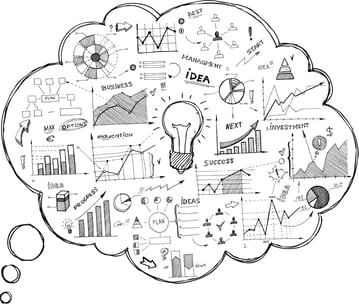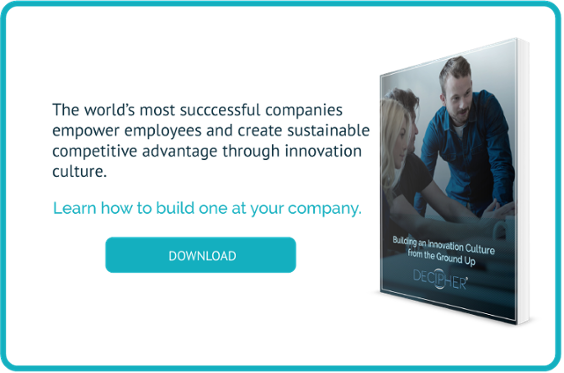Your organization’s innovation strategy is deeply influenced by your employees, their desires, and the internal processes which they follow. Consequently, workplace issues which impact these things will also influence your organization’s innovation strategy, and can lead to meaningful and lasting impact to the organization. These are five workplace issues which will impact your organization’s innovation strategy and how to plan for them.
Increased Data
Data has been a rising trend across industries due to the insight  and opportunities which can be garnered from it. As a result, access and quality of data is increasing rapidly at many organizations. Your company can use data analysis to bolster innovation by gleaning insight into where opportunities to innovate exist. For example, you can analyze customer feedback, purchasing information, or in some cases, usage statistics to discover how they use your product. This insight can give direction to innovations created. Additionally, you can purchase tools, like an innovation management system, which can give your decision making team data and insight on the performance of different innovation assets and how to best leverage them for success.
and opportunities which can be garnered from it. As a result, access and quality of data is increasing rapidly at many organizations. Your company can use data analysis to bolster innovation by gleaning insight into where opportunities to innovate exist. For example, you can analyze customer feedback, purchasing information, or in some cases, usage statistics to discover how they use your product. This insight can give direction to innovations created. Additionally, you can purchase tools, like an innovation management system, which can give your decision making team data and insight on the performance of different innovation assets and how to best leverage them for success.
Collaboration
Both on the individual and organizational levels, collaboration is becoming increasingly popular at organizations. For individuals and groups, collaboration can spur new ideas which might not otherwise been thought of. A recent study by Nielsen determined that concept performance increased with collaboration that teams of 6+ collaborators performed 58% better. Your organization can take advantage of this by encouraging collaboration on new ideas across all functional groups — not just those in development.
The organization as a whole can also collaborate to innovate by taking advantage of innovation ecosystems. These networks built of partners, suppliers, customers, and even competitors allow your organization to share ideas, costs, and risks in order to develop better products and the market as a whole.
Diversity
Workplace diversity is a hot issue in organizations and one which has rightfully garnered attention in recent months. Diversity is crucial to innovation because different backgrounds are key to building healthy discussion and stemming new ideas. Organizations that focus on creating multidimensional diversity are 70% more likely to capture new markets and 45% more likely to experience market growth in existing markets. Your organization can focus on improving workplace diversity by strategically hiring and building diverse functional groups, optimized to increase and enhance innovation.
Flexibility
The idea of flexible work originated from the need for greater work-life balance and the increased capabilities of technology to support remote working. While that’s still a main concern for workers, flexibility has since morphed to include flexible location, hours, projects, and more. This means a few things for your organization’s innovation strategy. First, to accommodate virtual innovation, your organization will need to invest in tools which enable collaboration virtually, like online whiteboards or chat tools.
Secondly, flexible work policies allow your organization to be creative about how employees use their time and encouraging innovation. A good example of this is developing an unstructured time initiative, where employees can use a certain percentage of their time to generate and pursue new ideas.
Employee Engagement
Engaged employees are the key to higher productivity, retention, and innovation and it makes sense when you think about it (why would an unengaged employee be motivated to generate innovative ideas?). Employee engagement can be critically focused to innovation by developing further initiatives to help encourage innovation by employees. In addition to unstructured time and collaboration, your organization could try creating innovation contests or inventor incentive programs.
Additionally, employee engagement is usually impacted by the employee’s perceived connection to the organization’s overarching values and mission. Make sure to keep this information transparent to all employees to develop a sense of connection and a desire to innovate to advance those goals.
Aligning your organization’s innovation strategy to these pertinent workplace issues can help your organization increase the number and quality of innovations, while creating strategic opportunities to capitalize on. These creative innovation methods and initiatives can also help to nurture a meaningful innovation culture at your organization. To learn more about building an innovation culture, get this free ebook: Building an Innovation Culture from the Ground Up.


